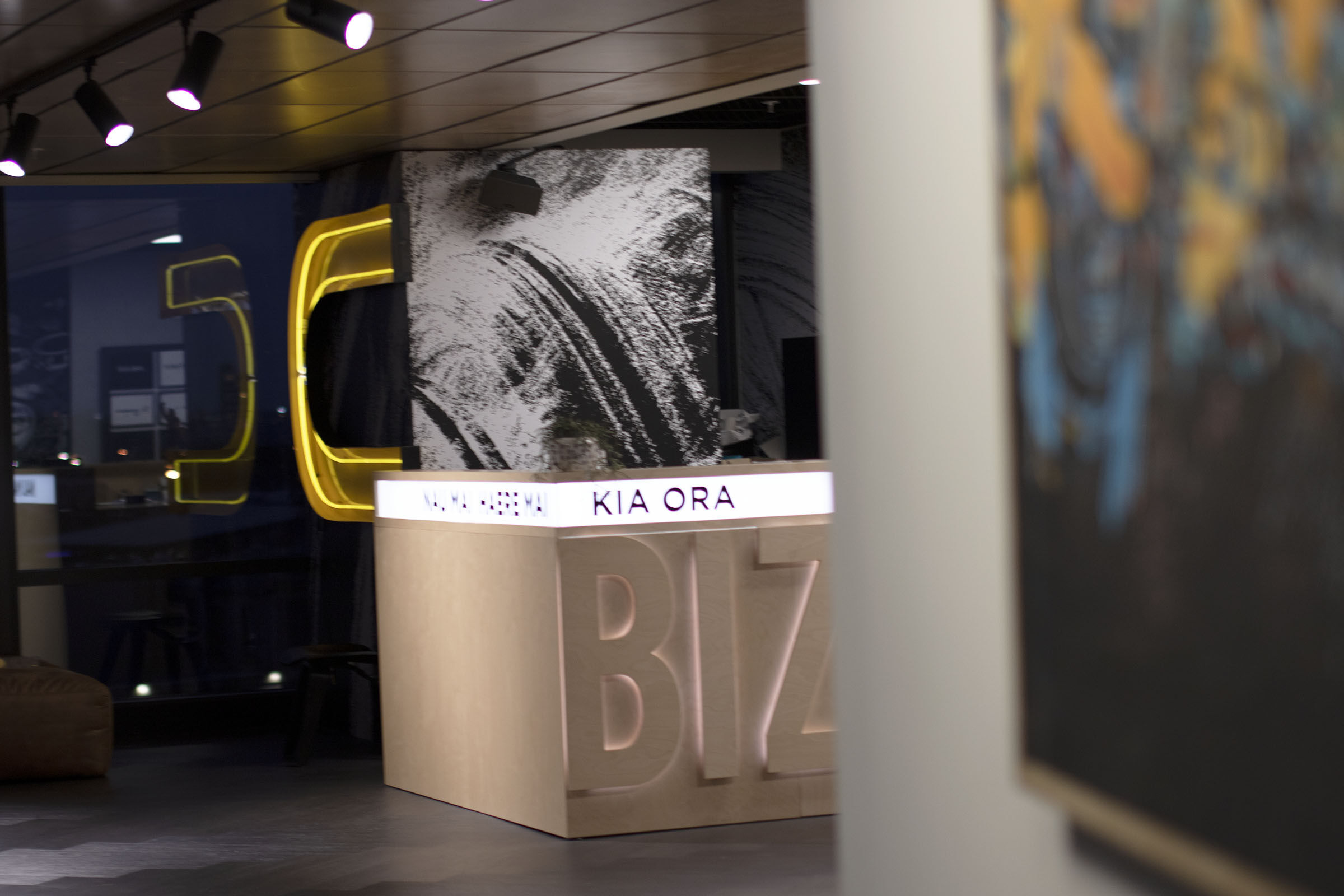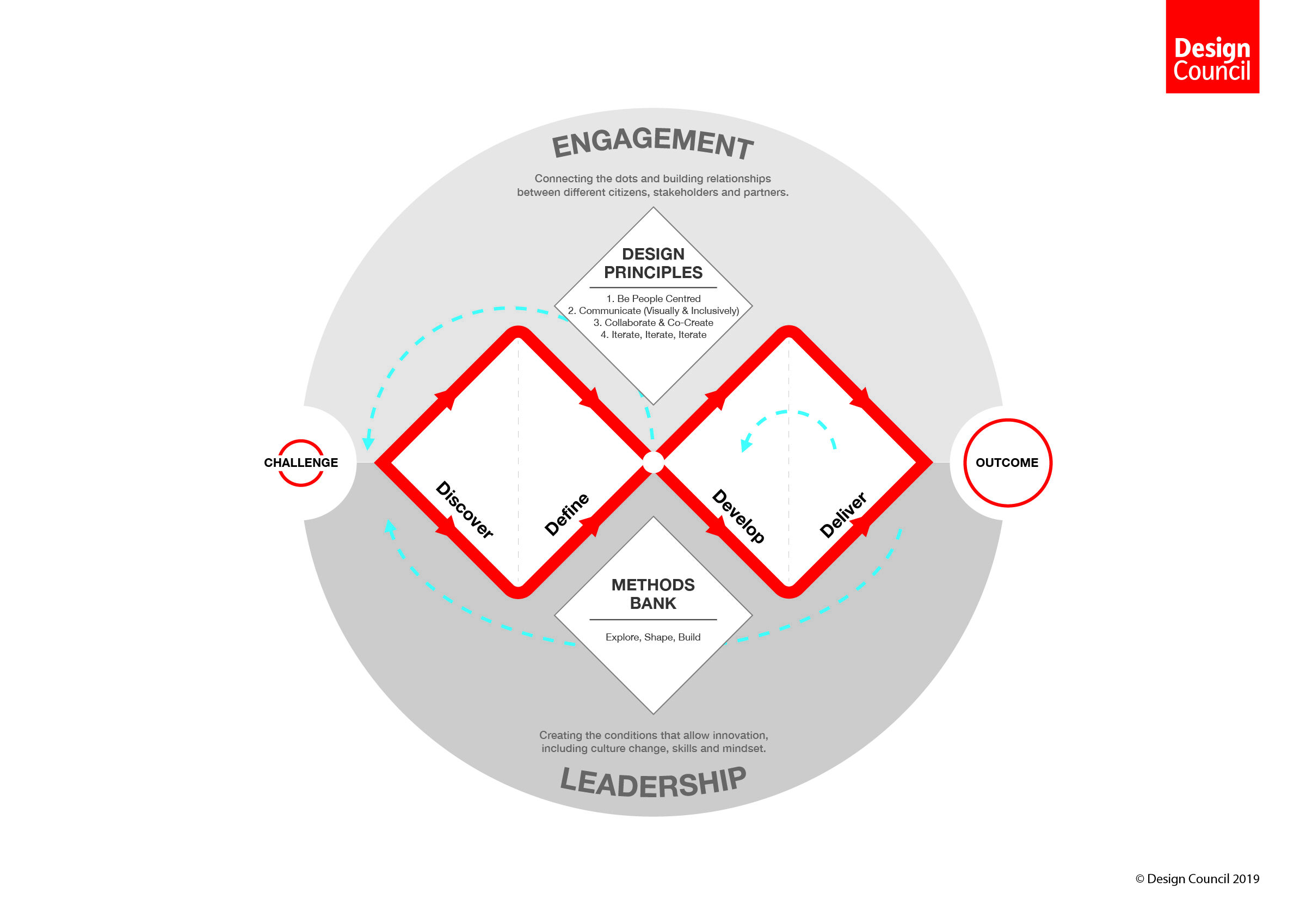Around the world people are improving their ways of working - putting human needs and behaviour at the centre of decision-making, to design ideas really worth doing. With challenges related to mental health services, diversity and inclusion, and democratic engagement (not to mention climate change) - we need ideas that work, and we need them now. So organisations are working to empathise with customers, to truly understand the problems that need solving, then develop and deliver solutions purposefully architected to make a difference. Here at TEDxAuckland, we too are listening. It’s exciting to hear across the diverse industries of our speakers that their processes are also converging - toward design-thinking.
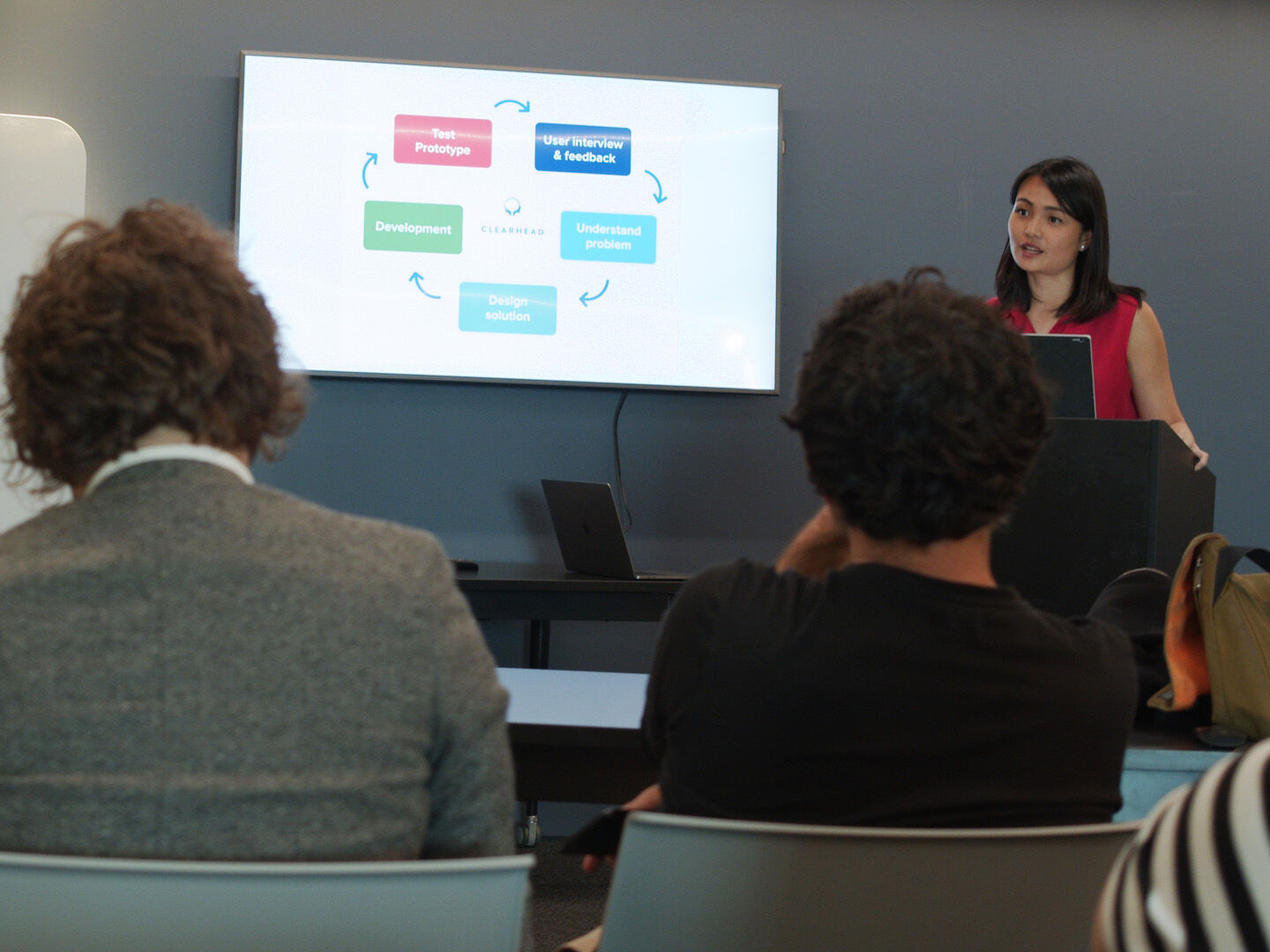
Angela rehearses her talk. Photographer: Adam Browne.
It’s 5:43pm. Warm rays flood the BizDojo Ponsonby lounge as crew and speakers trickle in one Friday afternoon. Our biggest event of the year - TEDxAuckland tūmanako - is quickly approaching, and the buzz is palpable in the room. Beers and banter flowing, speaker training resumes.
Dr. Angela Lim, CEO of Clearhead - New Zealand’s first app to diagnose and recommend mental health treatment - steps us first to rehearse her talk. Knowing there was a better way to tackle mental illness than being the ambulance at the bottom of the cliff, Angela left general practice to develop Clearhead. In its first year the platform acquired users in regions throughout Aotearoa New Zealand - a great achievement, especially considering in 2018 the OECD reported “regional disparities in health outcomes” in New Zealand as the “second largest among OECD countries”. While Auckland ranked in the top 20% of OECD regions, Gisborne came out in the bottom 20% (Regions and cities at a glance 2018 - New Zealand, OECD). In Angela’s polished TEDx talk she reveals “I genuinely believe this [regional success] is from the co-design process”.
“…when you embrace diversity, it can be a catalyst for innovation.” - Annamarie Jamieson
Arriving through the elevator doors is Annamarie Jamieson, People and Culture Director at Stuff, and driving force behind The Coffee COOP - Stuff’s Auckland office cafe staffed by deaf baristas. When Annamarie initially suggested this idea to improve diversity and inclusion in the workplace, she was hit with comments like “but we can’t have a cafe with deaf baristas, how will they hear the orders?.” Well if you’re considering your people - all your people - from the beginning, that just becomes part of the design. Annamarie says in her TEDx talk from the early days the cafe quickly broke even, but creating the Coffee COOP “also took us on a journey of patience, kindness, empathy, and inclusion … when you embrace diversity, it can be a catalyst for innovation.”
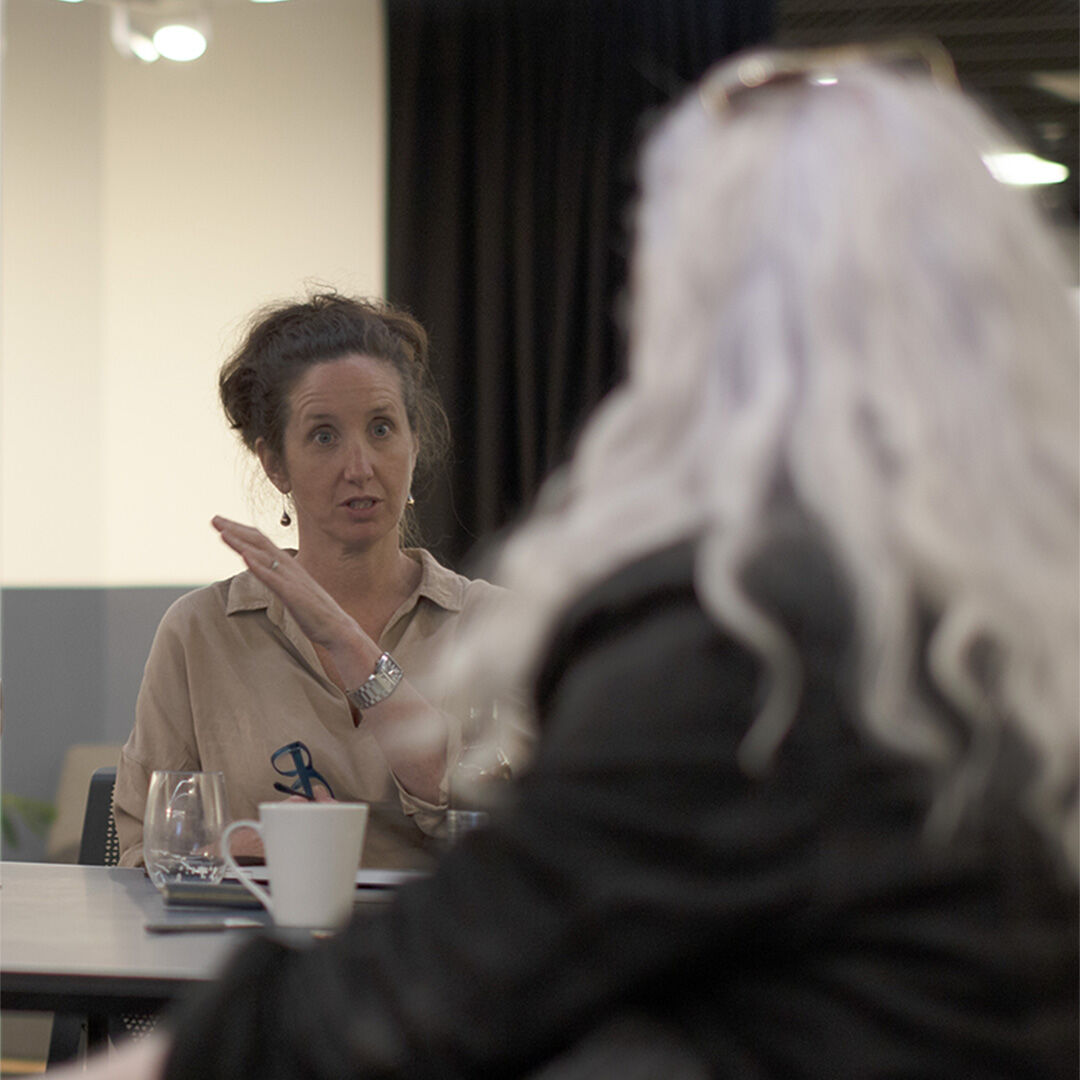
Annamarie chats with Simon during a speaker training session. Photographer: Georgia Schofield.
By putting people at the centre of their design processes, Angela and Annamarie have been able to understand the key pain points of a system, and then design a solution that really works to begin to solve them. Whether you call that co-design, user experience design, service or product design, these ways of working can often fall under an umbrella term of design-thinking.
Design-thinking is human-centred. “It encourages organisations to focus on the people they’re creating for, which leads to better products, services, and internal processes” (IDEO, 2019).
The Design Council (UK) offers a clear depiction of one design process coined the ‘Double Diamond’. Used globally by designers and non-designers “to tackle some of the most complex social, economic and environmental problems,” the Double-Diamond is a useful roadmap for those interested in trying a design-thinking way of working.
Starting with the discovery phase to understand “rather than simply assume, what the problem is”, we can then define the problem from insight gathered, develop various solutions, and deliver an outcome using iterative testing. There’s also more detail on design principles, methods, leadership and engagement which aid the process on the Design Council website. So what other opportunities are there to apply design-thinking?
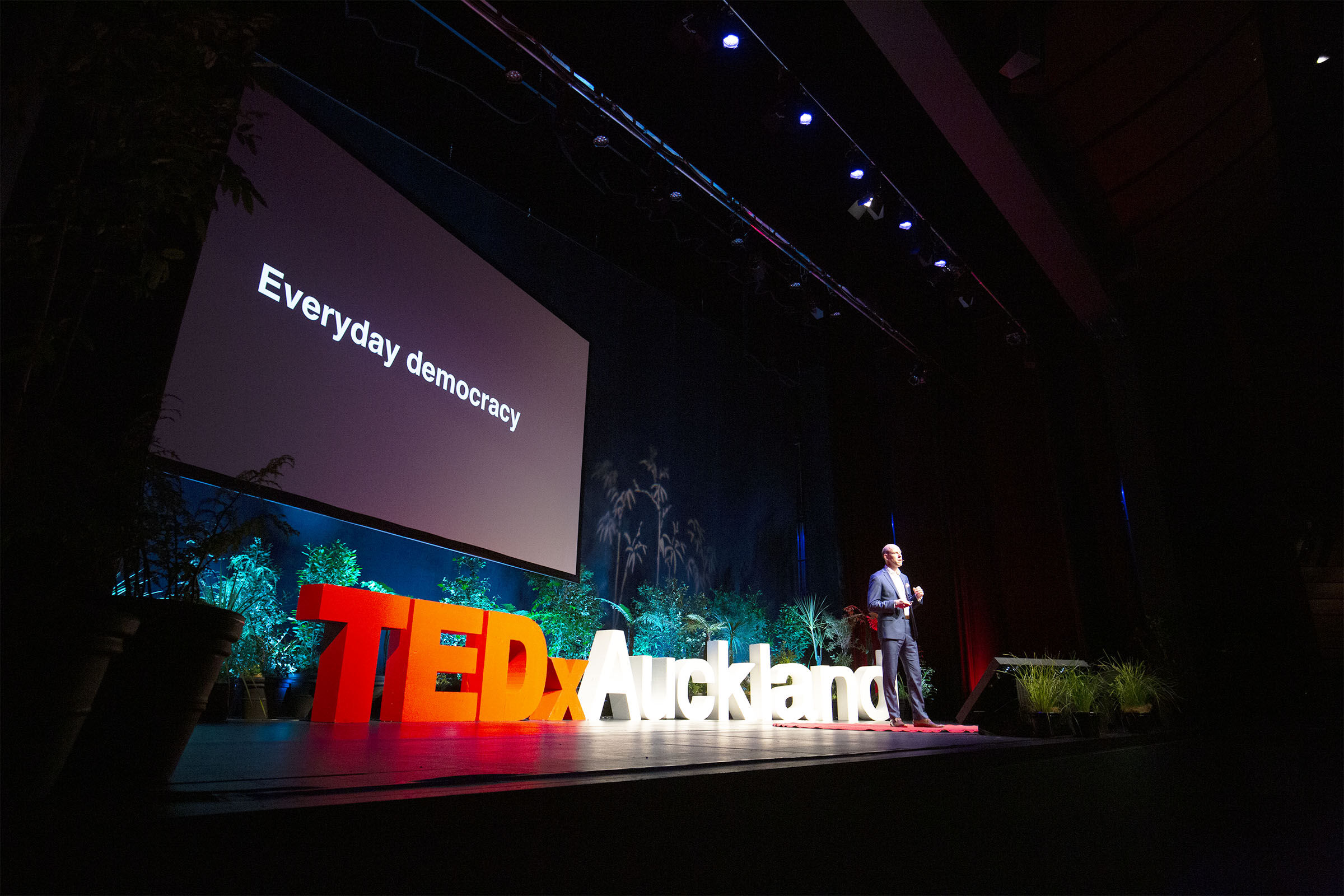
Max on stage at TEDxAuckland 2019. Photographer: Georgia Schofield.
Down in Wellington, Author Max Rashbrooke spends his time researching and writing with the belief that successful societies are both economically and democratically inclusive. On the tails of another low voter turnout for New Zealand’s recent local body elections, Max painted examples of everyday democracy across the TEDxAuckland stage. The ideas he discussed - citizens’ assemblies, participatory budgets, and online consensus - were solutions chosen to engage human behaviour. In an attempt to curb postal voting issues during Auckland’s 2019 elections, we saw the return of pop-up polling booths at universities and night markets, generating discussion on how local elections are run. With this in mind, it’s clear that the 2022 local elections are a prime candidate for some reengineering via design-thinking.
Closer to home, we’re also starting to explore design-thinking ways of working at TEDxAuckland. With our final event for 2019 done and dusted, we’re spending December reflecting on a jam packed year with three successful projects, and entering a discovery phase to understand how we can do things even better. We’re excited to see what creativity this brings, and can’t wait for you to join us on the journey. So, how will you use design-thinking in 2020?
Nikki joined the TEDxAuckland marketing and communications team in October 2019. As an experienced Digital Strategist, she is passionate about helping forward thinking initiatives succeed by designing superb user experiences and clear purposeful communications.
